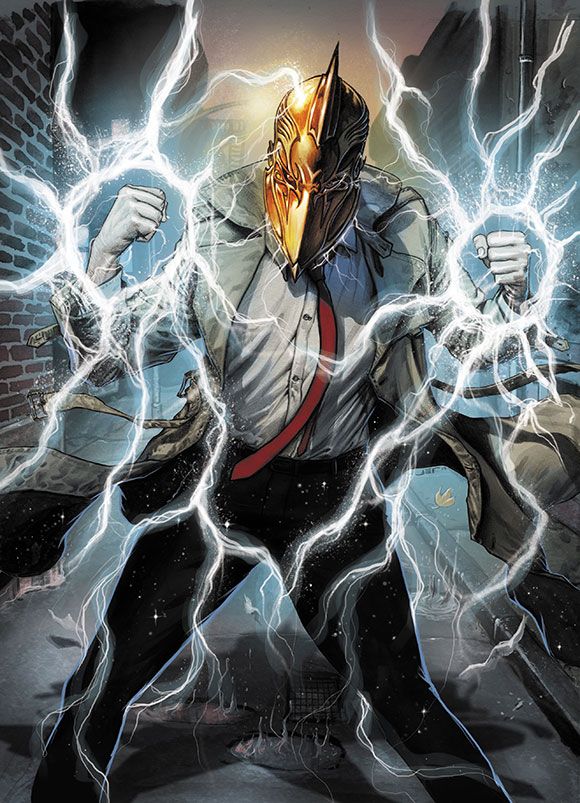Having to negotiate Constantine's role in the main "Futures End" series, regular "Constantine" writer Ray Fawkes chooses a completely divergent path with "Constantine: Futures End" #1 and instead gives readers the showdown between Constantine and the helm of Nabu. Artist Juan Ferreyra is on hand to draw the experience, while the regular colorist tandem of Richard and Tanya Horie handle the hues and Pat Brosseau provides lettering.
As with all things mystical in comics, the lettering is crucial to setting the tone and temperature of "Constantine: Futures End" #1. Brosseau finds exactly the right tenor for Nabu, the disembodied mystic who controls the golden helmet that once belonged to Doctor Fate, giving the voice shimmery creepiness that stands apart from the rest of the dialog and narration of this comic book.
There are ancillary characters and plenty of contextual narration, but the main components of "Constantine: Futures End" #1 are Nabu and John Constantine, both of whom are individually sculpted through Fawkes' script. Fawkes keeps the story brimming with mystery and suspense, giving readers plenty of moments certain to lead them to the edge of their seats before throwing a change-up perfectly worthy of John Constantine. The writer crafts a mystical conflict that transcends realms and sits outside of time, despite the "Futures End" brand on the lenticular cover of this comic book. Trying to be more cinematic helps keep the cast lean and engaging to the readers while also affording Fawkes the opportunity to push this story forward and keep it self-contained. In every sense, "Constantine: Futures End" #1 is a "What If...?" story that hints at things to come in the near future for both John Constantine and Khalid Ben-Hassin, the Doctor Fate on "Earth 2."
Doctor Fate is clearly one of DC Comics' most distinctive profiles, with a silhouette that is instantly recognizable and a wide-ranging set of powers and abilities that invites artists to stretch their creativity. The art in "Constantine: Futures End" #1 appears to be crafted directly from Juan Ferreyra's pencils, or perhaps even washes. It gives the story a very vaporous appearance, but sometimes the figures swim through the settings, barely able to get separation from their surroundings. Other times those characters pop nicely from backdrops thanks to the color work of the Hories. Overall, this comic book has an appearance that is more organic than technical and looks much more like an independent title than the latest issue of a comic book featuring a soon-to-be television star. Some of Ferreyra's figure work is a bit wobbly, but the tight cast and singular story make it easy to keep characters and developments clear.
Totally disconnected from Constantine's appearance in the regular "Futures End" series, "Constantine: Futures End" #1 is more like an extra-special, continuity-lite (or heavy, depending on how much of this comes to pass) issue of "Constantine." This comic book serves as a nice interlude from current goings-on in John Constantine's own title, but also gives readers a chance to see the helmet of Fate and the wit of Constantine matched against one another in a compact, entertaining setting.

